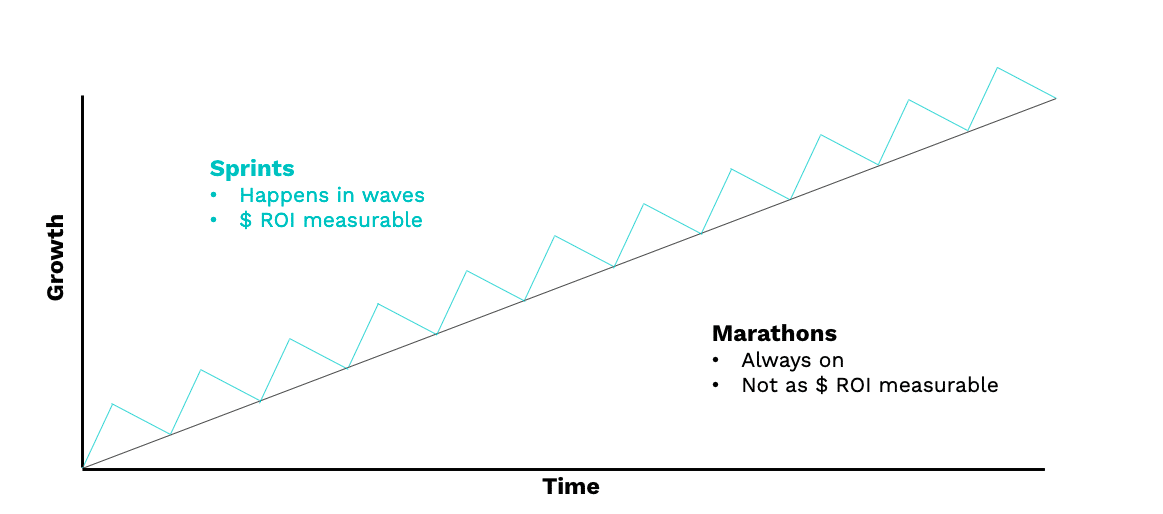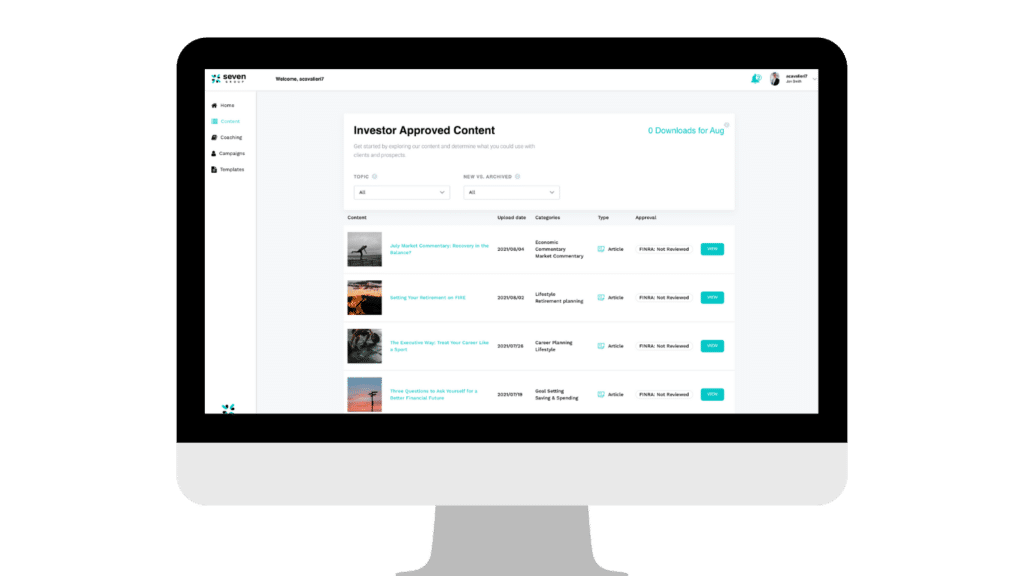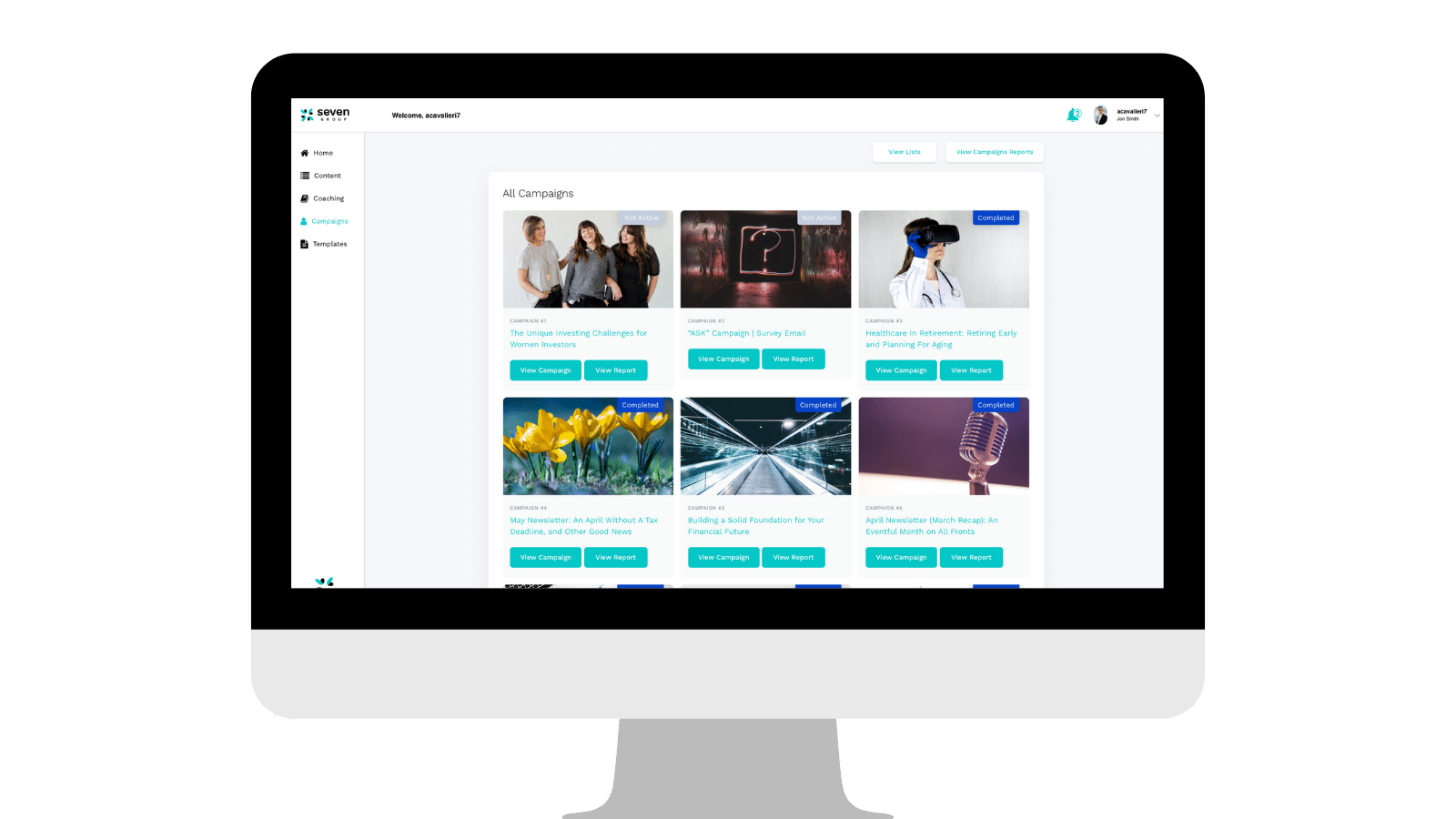Interested in learning more about the Advisor I/O platform?
Leave us your info and we'll send you more details
Blog Detail
Marketing is About Marathons AND Sprints: How to Plan for Both as a Financial Advisor
by Advisor I/O
Over the past decade, you’ve seen a shift in marketing. Whether it’s because social media has lowered the cost of entry or because we’re connected 24/7, the idea of “always-on” content marketing has come to the forefront.
The idea is that every day, you’re putting out some form of content, staying in front of your audience, and sharing consistently and organically. Over time, the more you share, the more you interact, the more value you provide, the more community you build, the more business you drive, the sounder brand you build.
While content marketing is critical to building a good brand, running traditional campaigns has gone out of style. But, if you look at any significant brands – Apple, Nike, Spotify – they’ve built their brands in large part because they’ve found ways to keep the “always-on” content flowing while pairing that with extensive push campaigns.
Both are critical to brand building, both vital to business growth.
Defining the Sprints
- Sprints are the push campaigns you do around certain times of the year. This can and should be very measurable from an ROI perspective, leveraging paid media, conversion events (i.e. webinar, guide, event, course, appointment booking), and email marketing to understand the performance. These should happen in sprints – days or weeks of promotion with a start and end date. And generally, there is more of an investment in the creative and distribution.
Defining the Marathons
- On the other hand, Marathons are happening no matter the time of year or if a campaign is running. This is your traditional content marketing – distributing quality content (blog, video, or podcast content) to consistently educate, engage, and inspire your audience. You often attract with sprints and nurture with marathons – sharing this content through your organic social channels and staying visible

How to Plan out Your Sprints and Marathons as a Financial Advisor
Step 1: Set Your Audience
It can be hard to clarify the audience for your practice precisely because most advisors have a mix of people with different demographics, needs, and asset levels. But the key is to pick a single audience and determine their wants/needs by answering big questions:
- What are the big problems I solve for my clients?
- Why do they face these issues?
- How do these problems crop up in their everyday lives?
- Why is this a problem for my clients? Why do they care?
- What is it that makes my clients reach out?
- Where do they live digitally?
- How do they like to interact with me?
- Who do I love to work with?
- Who am I best positioned to help?
Step 2: Determine Your Content Themes
Once your audience is determined, you can now focus on your content themes. Broad sweeping topics that will often have many layers: Retirement Income, Tax Planning, Macro-Economic Events, Small Business Management, etc… These themes help you root yourself into buckets that you can keep consistent throughout the year and identify topics that fit these buckets. Or, more simply, what you want to be “known for” over time. Both sprint and marathon content will fall under the content themes, and these themes should be answering the question: What are the 5-10 most significant issues my clients face?
Step 3: Determine the Content Series for the Marathons
When it comes to marathon content, we often recommend that it’s series-based. More on this here, but essentially making your content series-based allows you to put something out consistently without too much movement on structure and approach. A podcast carries the same structure in each episode.
A blog series carries the same writing style each post. A video series carries the same intro and outro each episode. Deploying series-based content creates an expectation with your audience. One where they look for your post every morning, they search for your podcast every Monday. While marathon content will sometimes drive new prospects, the goal of marathon content is meant to drive affinity with people who are either clients or brand followers.
Your Series-Based Content Checklist: Type, Structure, Cadence, Distribution Channels, Supporting Assets, Metrics.
How we help advisors do this:

We provide our members with ready-to-send blog content. Fresh topics every week covering 15 core financial planning themes. Each blog post can be sent directly from our platform or download and then uploaded to your own website.
Step 4: Determine Your Topics & Timing for Campaigns
Your campaigns should happen at a lower frequency throughout the year, but with heavier promotion and aim to lead to a conversion event where you’re collecting a lead. This could come in the form of a webinar, checklist, or event.
Your best bet is to plan campaigns around life events (i.e. if someone is 5-8 years away from retirement) or year events (i.e. tax season). This should be a complete 360 campaign that includes promotional emails, advertising, direct outreach. Campaigns should run 3-4 weeks, but they can run automatically and on-demand if they are set up properly. A good cadence is to run a campaign once per quarter or every other month.
Your Campaign Checklist: Topic, Tactics, Budget, Distribution Channels, Supporting Assets, Metrics.
How we help advisors do this:

We provide our members with “ready-to-deploy” webinar campaigns and email sequences, including the presentation, three email templates, ad copy/graphics, and a checklist, covering everything from retirement income planning to social security.
Step 5: Get the Right Marketing Tools Setup
Your marketing can’t work without the right tool setup. This includes a content system to fuel your marathon content, landing pages for webinar registration or downloadable assets, email systems to nurture individuals, or CRM tracking everyone.
Need a list of tools? We cover an entire list here.
The Bottom Line
Once you have your content and distribution plan set up, it’s time to press go. Before you learn to run, you must walk. Set a goal, build the muscle to increase the reps, investment, and learn from your data.




